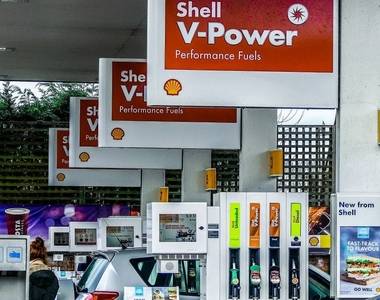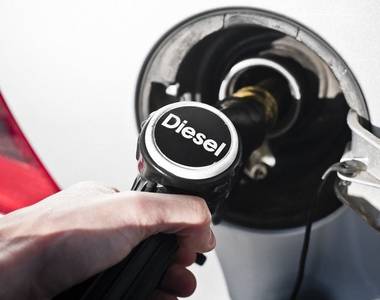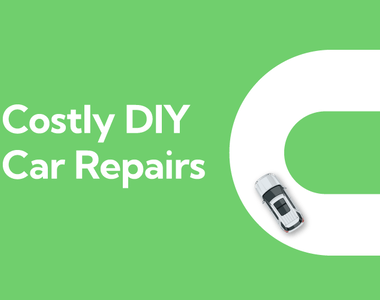At Car.co.uk, we get a lot of questions about manual and automatic cars, including:
- Do manual or automatic cars use more fuel?
- Are manual or automatic cars more expensive to run?
The debate about fuel economy between manual and automatic transmission cars has, for a long time, been won by manuals – but has modern automatic gearbox technology turned the tables? We’ll have a look at the evidence.
Manual vs Automatic gearboxes
As a country, our taste in gearboxes is changing. 5 years ago, only 500,000 new automatic transmission cars were registered – but fast-forward to this year – and over 1,000,000 automatic cars have hit UK roads. If that rate of growth continues, it will mean automatics outnumber manuals by 2021.
So, it’s worth considering what motivates people to buy new cars. Overwhelmingly, people look at value for money before they drive their new car out of the showroom – so the initial evidence suggests people are increasingly convinced that an automatic isn’t going to send their running costs sky-high.
How are fuel and gearboxes linked?
To understand how fuel and gearboxes are related, we can take a look at how a manual transmission car works – the type that most UK drivers are used to.
To shift gear in a manual, we press the clutch to disengage the gearbox from the engine, select our gear manually with the gear lever, then ease the clutch back to re-engage the engine and gears. It’s second nature to most of us – but the reason for doing it is linked directly to fuel economy.
Whether you’re a petrol or diesel driver, your engine has an optimum ‘range’ of power – an upper and lower number of engine revolutions (revs) that between which, the most efficient power is produced. As an example - you could drive on the motorway at 70mph in 3rd gear – but the engine would be revving excessively, using a hugely increased amount of fuel, and wearing the engine far more rapidly. Instead, we select 5th or 6th, allowing the engine to turn the wheels at our chosen speed, while maintaining lower revs – and staying within the most efficient power range.
With a manual gearbox, we use our judgement to decide when the engine’s ready to move up or down through the gears, so, if you’re looking at how to save fuel while driving a manual car, you should try to make sure you are staying in this most efficient range of revs – changing up early, and down later.
Why do automatic gearboxes have a bad reputation?
When asked if automatics use more fuel – people answering ‘yes’ are usually thinking of traditional auto transmissions. Instead of using a clutch, there’s a ‘torque converter’ component used – doing away with the clutch pedal altogether.
Instead of using a clutch to transfer power from the engine to the gearbox and wheels, a torque converter uses a thick hydraulic fluid – making for smooth gear changes and long-lasting performance. These gearboxes come with some significant downsides though; they’re heavier than manuals and, frankly, design means they’re not very efficient at transferring power.
‘Heavy’ and ‘inefficient’ are two major enemies of fuel economy – but the bad news doesn’t stop there. Older automatic gearboxes generally only had 3 or 4 gears – so staying within that previously mentioned optimum range of revs was more difficult, especially on cars with smaller engines.
The result? Older automatic gearboxes often used significantly more fuel than a manual alternative. If you were looking at how to save fuel while driving an older automatic car, your options were very limited.
A new generation of automatic transmissions
With all this talk of poor fuel economy – it’s probably no surprise to discover automatic gearboxes have had something of a renaissance in recent years.
Traditional automatic gearboxes are still around – but their smooth-shifting is now generally only found on larger prestige cars that have the power and engine size needed to negate any of the negative side-effects.
More modern automatic gearbox choices include:
Single automated clutches
A single automated clutch works in much the same way as a manual gearbox – but the clutch pedal is gone, replaced instead by an electronic, computer-controlled clutch. The result? A much lighter and cheaper alternative to the traditional auto gearbox.
This type of clutch isn’t without downsides though - when the car’s ECU ‘brain’ can’t decide which gear it needs to be in quickly; a single automated clutch car can be a little jerky when shifting.
Dual-automated clutches
Pioneered by Porsche, the dual-automated clutch (sometimes called a DSG or direct shift gearbox) works in a very similar way to the single automated version – but with 2 clutches, the car can pre-select the gear it’s changing to, making the shift almost entirely seamless.
The upside is incredibly quick and smooth shifting of gears. So what’s the downside? Dual-automated clutches tend to be more costly than other modern auto gearbox choices.
CVT gearboxes
A Continuously Variable Transaxle (CVT) gearbox works a little differently to either of the other gearbox options we’ve talked about – instead, changing the configuration of a drive belt that delivers power from the engine to the wheels.
While CVT transmissions have traditionally been used on small city cars, recent developments have made them more suitable for higher powered family and performance cars.
How do these gearboxes reduce fuel consumption in automatic cars?
Aside from the obvious weight and efficiency benefits when compared to traditional autos, one of the biggest factors in creating fuel efficient automatic cars is the number of gears that can be chosen from. Where older auto transmission often only had 3 gears – modern automatic gearboxes now have 7, 8 or sometimes even 9 gears.
This takes us back to our manual gear change example – and the importance of staying within the most economical engine power range. Quite simply, the more gears there are to choose from, the more likely your car is to stay within that most efficient rev range.
With less weight, better power delivery, and great gear selection efficiency – it’s no surprise to discover that automatic gearboxes (and the driver comfort that they bring) are increasing in popularity every year.
What are the best MPG automatic cars?
Our recent list of the UK’s most fuel-efficient cars didn’t include automatics – and that’s because we didn’t need to differentiate between the two gearbox options. Now, automatics produce almost identical fuel economy figures to their manual counterparts – and in some case, they’ve even better.
Manually shifting gear takes the average driver somewhere between 0.5 – 1 second. In that time, engine power drops away slightly. In the fastest dual-automated gearboxes, changes are made in 8 milliseconds; giving the engine no time to drop power. The quicker the change, the more efficient the drive.
So, do automatic cars use more fuel than a manual? No. In fact, it’s probably no surprise to find that modern drivers aren’t asking whether automatic cars use more petrol; instead, they’re more keen to question the fuel efficiency of manual cars. The future, it seems, is looking increasingly automatic.











